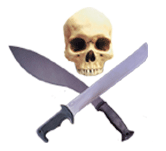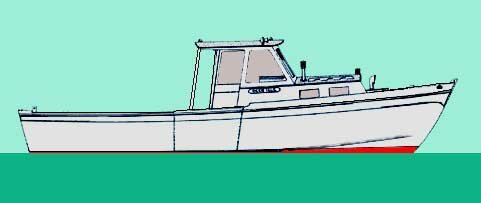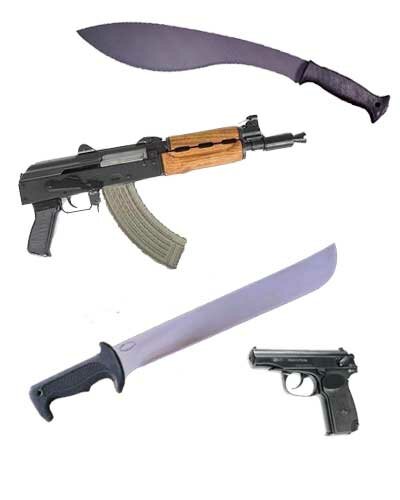
Nothing really. Today, the words "Pirate" or "Piracy" are spelled with an "I". In the Golden Age of Piracy, spelling was a haphazard kind of thing, and the word was often spelled with a "y". So there was a time when the word Pirate was spelled Pyrate, Pirate, Pyrat, or Pirat. I use pyrates, just for the whimsy and feel of it.
What is piracy?
Despite what Johnny Depp thinks, pirates were not the rock stars of the 18th century. However as time marches on, the fictional accounts of the common sea robbers has created a romantic illusion of pirate's life. Charles Johnson called piracy "The Great Mischief and Danger Which Threatens Kingdoms and Commonwealths". His fantastic "true" accounts of the robbers and murderers of the sea may be the beginning of the romantization of the pirate's life. But how true were Charles Johnson's accounts and why was piracy romanticized.
By definition, piracy is any robbery or other violent action, for private ends and without authorization by public authority, committed on the seas or in the air outside the normal jurisdiction of any state. Because piracy has been regarded as an offense against the law of nations, the public vessels of any state have been permitted to seize a pirate ship, to bring it into port, to try the crew (regardless of their nationality or domicile), and, if found guilty, to punish them and to confiscate the ship.
A key point in the definition of piracy: according to international law, is that the act takes place outside the normal jurisdiction of a state, without state authority, and that the intent is private, not political. Thus, although acts of unlawful warfare, acts of insurgents and revolutionists, mutiny, and slave trading have been defined as piracy by national laws of various countries or by special treaties, they are not, in most cases, piracy by international law.
Article 101 of the United Nations Convention on the Law of the Sea (UNCLOS) defines piracy as:
- (a) any illegal acts of violence or detention, or any act of depredation, committed for private ends by the crew or the passengers of a private ship or a private aircraft, and directed;
- on the high seas, against another ship or aircraft, or against persons or property on board such ship or aircraft
- against a ship, aircraft, persons or property in a place outside the jurisdiction of any State
- (b) any act of voluntary participation in the operation of a ship or of an aircraft with knowledge of facts making it a pirate ship or aircraft;
- (c) any act inciting or of intentionally facilitating an act described in sub-paragraph (a) or (b).
Piracy has occurred in all stages of history. In the ancient Mediterranean, piracy was often closely related to maritime commerce, and the Phoenicians appear to have engaged in both, as did the Greeks, Romans, and Carthaginians. In the Middle Ages, Vikings from the north and Moors from the south also engaged in piracy. At the conclusion of European wars during the Renaissance and after, naval vessels would be laid up and their crews disbanded. From among these men, pirates recruited their crews. A common source of piracy, for instance, was the privateer, a privately owned and armed ship commissioned by a government to make reprisals, to gain reparation for specified offenses in time of peace, or to prey upon the enemy in time of war, with the right of the officers and crew to share in prize money from captured vessels. The temptation was great to continue this profitable business after the war without authorization. During the Elizabethan wars with Spain in the late 16th century, treasure-laden Spanish galleons proceeding from Mexico into the Caribbean were a natural target for privateers, and the line between privateering and piracy became difficult to draw.
With the collapse of the Turkish Empire in the 16th century, piracy once again became common in the Mediterranean. This new outbreak was due to the virtual independence of the Barbary States of North Africa from Turkish control. Morocco, Algiers, Tunis and Tripoli not only tolerated piracy but sponsored it. This action led to the four countries being branded "the Pirate States". In the early 19th century the Pirate States were suppressed by successive actions of American, British, and French forces.
Typically, armed thugs will try to sneak on board a ship and try and overcome the crew in an attempt to steal the cargo. Today, the sloop had been replaced by small motorboats. Often ships are attacked while docked and most of the crew is away. Typically the pirates of today are armed with axes and long knives. Occasionally some may have guns. They tend not to fight hard and prefer to flee if the crew manages to organize any kind of defense.
According to the latest statistics (June, 2006) from the IMB Piracy Reporting Centre:
"...global piracy increased slightly in the first quarter of 2006. Reported attacks have risen approximately 8% when compared with the same period in 2005. The actual number of reported piracy attacks in the first three months of 2006 was 61, a modest increase over the 56 attacks noted in the same period of the previous year."
As can be expected where ever unstable governments are found, piracy tends to flourish. In January, 2006 the seas around Iraq were declared a Piracy hot zone with 10 attacks occurring 2005. no acts of piracy were reported in 2004.
During 2004 pirates preying on shipping were more violent than ever in. In that year Pirates murdered a total of 30 crew members, compared with 21 in 2003, according to the ICC International Maritime Bureau 2004 Annual report on pi racy.. The number of attacks reported worldwide through the IMB Piracy Reporting Centre in Kuala Lumpur was 325, down from the 445 recorded in 2003.
Actual piracy incident reports
The following are some actual incident reports from the waters around Indonesia. As you can see there is really nothing romantic about these thugs:
- 06.07.2005 — at 0550 UTC at Kingston anchorage, Jamaica.
Five robbers armed with long knives boarded a container ship. They threatened duty A/B with knives. They broke locks of storerooms and opened a container on deck. Alert crew raised alarm and robbers escaped empty handed in their boat. Master informed authorities and two hours later coast guard came for investigation. - 06.07.2005 — at 0030 LT at Dumai inner anchorage, 01:42.3N-101:26.7E, Indonesia.
Three armed robbers boarded a bulk carrier. Alert duty A/B raised alarm and crew mustered and robbers escaped in their boat. Master informed authorities but received no response. - 06.07.2005 — at 0100 LT at Surabaya, Indonesia.
Robbers boarded a bulk carrier and stole a life raft and ship's property.
The following was is an excerpt of Piracy around the Horn of Africa (Somalia).
Piracy heats up in Somali waters
London, 21 June 2005
The abduction of crew poses a serious threat to shipping in Somali waters
ICC’s International Maritime Bureau (IMB) warns that acts of piracy are on the rise in Somali waters. Since March 2005, there have been at least five attempted hijackings, two of which escalated into full blown acts of life-threatening piracy. This rise in threatening activity comes after a period of relative calm. Only two incidents of piracy were recorded in the whole of 2004.
Captain Pottengal Mukundan, Director of IMB stated: “IMB has received reports of pirates armed with automatic weapons and rocket propelled grenades. Innocent craft are approached by numerous pirate craft, arriving from different directions, firing indiscriminately at the bridge in an attempt to force the vessel to stop. In recent attacks at least one crew member was killed after pirates took control of a vessel.”
The attacks are noted for the pirates’use of distress flares as a means of luring their prey. Once the target vessel approaches, the heavily armed hijackers typically attack using a number of speedboats. Most of the recent targets were attacked while underway, and several shipmasters were forced to take evasive action to shake off their attackers .
Pirates in Somali waters have targeted everything that floats from fishing vessels and yachts to bulk carriers, general cargo ships and even a tanker aiming to steal valuables from the ship, or holding the crew for ransom.
In the latest incident on 6 June, three pirates armed with automatic weapons attacked the bulk carrier MV Tigris from a white speedboat off the coast of Mogadishu. The master of the Tigris sent out a distress call picked up by an American warship, USS Gonzalez. Using flares and searchlights, the warship scared off the pirates. No injuries to the crew were reported, though at least ten bullet holes were found in the starboard side of the Tigris near the bridge.
In an incident on 5 May, pirates boarded a general cargo vessel off Somalia’s eastern coast. The 21 crew members were beaten and locked in a room and the attackers demanded a ransom to release them and the ship. IMB is awaiting further news about this incident.
Captain Mukundan noted: “The lack of any stable or coherent government in Somalia is contributing to this lawlessness in its waters. Local warlords are interested in making money above all else, and hijacking commercial vessels has proven to be an expedient method of doing so.”
Because of the frequency and violence of recent attacks, IMB recommends that unless vessels are scheduled to call at ports in the area, they remain at least 50 miles off the coast of Eastern Somalia. The effects of this recommendation and the piracy activities in the area will be regularly monitored by IMB.
How has the piracy changed?
For the most part, piracy has changed very little over the years. The changes are basically those of technology not motive or method. Today's pirates tend to work in small groups of about a dozen men, operating from an unassuming water craft, perhaps a high speed boat or a fishing trawler, the equivalent of yesteryears sloop. Typically their vessels are not armed. It is more important for them to pass unnoticed when approached by law enforcement or military vessels.
For the most part the pirates are lightly armed with knives and perhaps pistols. Occasionally automatic weapons may be present, depending on the area the pirates are operating. There motive is greed. In some cases the pirates may work under contract for a corrupt warlord in a third world country. By strict definition this may not be consider piracy but terrorism if the acts are politically motivated. Often the war lord may have political reasons for the acts but often the pirates are doing it for the money and/or offer of safe-harbor.
For the most part, the pirates attack cargo or merchant ships. As with the days of old, they come in from the stern and try to board by tossing grappling hooks at the target vehicle. Also as with the days of old, the pirates sometimes try to get some of their brethren onboard the ship before it sets sails. By doing so, they have an inside man to signal them when is a good time to strike and aid in the boarding.
The pirates of today, tend not to venture too far out to sea preferring to work the coastal regions and occasionally the known trade routes. This is all very similar to what the pirates of old did. Unfortunately, our impressions of the pirates of yesteryear is influenced by movies such as Pirates of the Caribbean, Captain Blood, and The Black Swan. Most of the pirates of old were not Black Bart Roberts or Edward Teach. Most did not have mighty three masted ships with 42 guns. Many had fishing sloops with one or two guns and crew a dozen or so men. Often our view of the pirates of old should be reserved for the privateers, a different breed of sailor.
The question was posed "why was piracy romanticized?" One reason probably has to do with the history of the world at the beginning of the 18th Century. Spain controlled the Americas. it had the biggest and strongest Navy in the world. It was the superpower. Great Britain wanted to be the superpower. What it lacked was the resources to build a navy strong enough to take on the Spaniards at their own game. The answer was privateering, or a mercenary navy. The privateers became the heroes or rock stars of England and the scourge of her enemies. Because privateers are no longer used by the nations of the world, the distinction between pirates and privateers has blurred.
Could this be today's pirate ship?

Sport fishing boat or pirate vessel? Hard to tell! Capable of short travel over open seas, and relatively fast, a vessel such a this sport fishing trawler would be ideal for the small pirate crew of today. Passing themselves off as six or seven tourists on a fishing excursion, the pirates can come in close to unsuspecting vessels and do their dirty work. The same type of tactic worked hundreds of years ago when well built fishing sloops were used by coastal pirates.
How would today's pirates manage to afford such a start-up vessel? They can't! They obtain their boats the same way pirates did hundreds of years ago. They steal them!
Gone are the days of the cutlass and flintlock! The cutlass has been replaced by large knives such as the Kukri (top right) and a military style Machete (bottom left).
The Ak74u Krink (middle), a former Eastern Block assault weapon was made famous by the terrorist, Osama bin-Laden. It would be prize indeed for some of the more enterprising pirates of today. This version is a Yugoslavian import
A more common fire-arm would be a 9mm pistol; such as the IZH-71H (lower right). This handy pistol is the export version of the Russian Military Makarov Pistol, chambered to fire 38ACP (9 mm short) ammunition. It is common catch in Malaysia and around the Horn of Africa.

Tools of the modern pirate
AKS-74U Krinkov
- Caliber: 5.45x39 mm
- Magazine capacity: 30 rounds standard
- Overall length: 735 mm (29 in.)
- Stock Folded: 490 mm (19 1/4 in.)
- Barrel length: 210 mm (8 1/4 in.)
- Weight empty: 2.71 kg (6 lbs)
- Rate of fire: 650-735 rpm
IZH-71 H
- Caliber: .380ACP (9mm K)
- Magazine capacity rounds: 12
- Overall length: 165mm (6.5 in.)
- Barrel length: 94mm (3.7 in.)
- Weight, empty: 0.78 kg (1.71 lbs)

The only author and editor of all pages on the site. Most of what I write about is based on years of book reading on the topic. My first web page was published back in 1994.